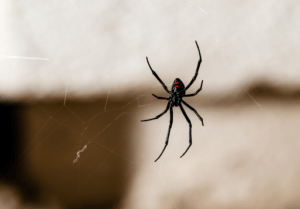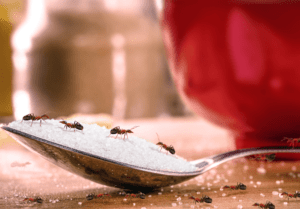Clover mites and chiggers are both tiny red bugs, but their similarities end there. However, due to their similar appearance, they’re often mistaken for one another. Both of these pests can be found in Omaha and surrounding areas, so it’s helpful to know the differences between them so you can be prepared in case you encounter them.
Clover Mites
These plant-feeding bugs seek our warm, dry places. During the spring and summer, they do well enough outside. As the temperature gets lower in the winter, they can become a nuisance in homes as they seek warmth. Crushing these bugs leaves a rusty, blood-colored stain behind, which can be a pain if you happen to find them indoors.
Chiggers
While clover mites can be a nuisance, chiggers can cause real harm. These red eight-legged bugs are so small that most people cannot actually see them. They measure close to 1/60 of an inch when they reach adulthood. They live in environments similar to ticks, and they bite just like ticks do. They can be deterred by DEET spray.
Key Differences Between Clover Mites and Chiggers
These are some of the main differences between these two types of red eight-legged bugs:
Physical Appearance
While you may spot a single clover mite, it’s unlikely you’ll spot a single chigger. Clover mites are about 1/30 of an inch with 8 legs, the front two of which are longer than the others and can be mistaken for antennae. Chiggers are much smaller, so if you see them, it will likely be in the clusters they travel in.
Habitat Preferences
These creatures have distinctly different habitats. Clover mites thrive in areas lush with clover and grass, especially in well-fertilized lawns. They’re most often seen on benches and concrete walls. Chiggers, on the other hand, enjoy brushy, grassy areas that retain moisture. You’re more likely to encounter chiggers while on a nature walk.
Bite Characteristics
Clover mites do not bite. Chiggers, however, bite in such a way that causes severe itching. Their saliva breaks down the skin, causing welts that look like small blisters or hives. To remove chiggers once they’ve gotten under your skin, you can wash the area with warm water and soap. Since they don’t carry disease, their bites don’t pose a serious risk for most people.
Understanding the differences between these tiny red pests can help you avoid them and take the proper action if you find them in your home. Neither of these bugs survive long indoors, so they’re not a serious risk if you see them in your home. However, if these bugs do cause issues for you, the Omaha pest control team at Pro-Staff can help. Call us at 515-279-7378 or contact us online for a free inspection.




